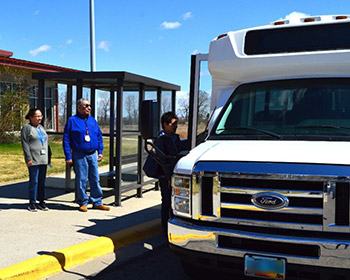Research Reports
Report Details
Abstract
 The objectives of this research are to study the demographic indicators of tribal communities that relate to transportation needs, describe and evaluate existing tribal transit operations and funding, and examine the role of transit in livability and quality of life in tribal communities in the United States. This study identified small urban and rural Indian tribes and reservations that have the most significant transit needs. The basis for this determination was an examination of traditional mobility need indicators such as population of older adults, people with disabilities, those with low income, school-age youth, and households with no vehicles. The study evaluated existing tribal transit operations and funding. Finally, this study conducted case studies in two selected Indian reservations to understand the role of transit and other factors in livability and improving quality of life in tribal communities. The case studies were conducted with Standing Rock Reservation in North Dakota and South Dakota and Makah Indian Reservation in Washington, and they involved surveys of community residents and transit riders. The study shows that tribal lands are mostly rural with lower population densities. Moreover, the share of the population often described as transit dependent, particularly those with low income, households with no vehicles, and youth, is often higher for tribal areas compared with the general U.S. population. Additionally, tribal areas often lack resources and are dependent on federal support to meet mobility challenges on reservations. The case studies identified several factors that could be improved to enhance quality of life in the communities, and they showed that transit can play a role.
The objectives of this research are to study the demographic indicators of tribal communities that relate to transportation needs, describe and evaluate existing tribal transit operations and funding, and examine the role of transit in livability and quality of life in tribal communities in the United States. This study identified small urban and rural Indian tribes and reservations that have the most significant transit needs. The basis for this determination was an examination of traditional mobility need indicators such as population of older adults, people with disabilities, those with low income, school-age youth, and households with no vehicles. The study evaluated existing tribal transit operations and funding. Finally, this study conducted case studies in two selected Indian reservations to understand the role of transit and other factors in livability and improving quality of life in tribal communities. The case studies were conducted with Standing Rock Reservation in North Dakota and South Dakota and Makah Indian Reservation in Washington, and they involved surveys of community residents and transit riders. The study shows that tribal lands are mostly rural with lower population densities. Moreover, the share of the population often described as transit dependent, particularly those with low income, households with no vehicles, and youth, is often higher for tribal areas compared with the general U.S. population. Additionally, tribal areas often lack resources and are dependent on federal support to meet mobility challenges on reservations. The case studies identified several factors that could be improved to enhance quality of life in the communities, and they showed that transit can play a role.